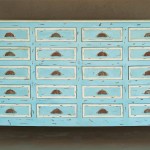 Well, I’ve got a flat tire. Right now. In fact, I’m writing this from the lobby of the tire repair shop. And of course, to be perfectly honest, I’m kind of half-expecting someone to walk over to tell me, “Sir, the tire’s all fixed and ready to go, but we decided to take a look around and noticed that that motor’s leaking all kinds of Chromascopic oils and your Magnesium Regulator is completely empty. On top of all that, your Obstingent Flux Nexometer is completely shot.” (I’m not a car person, so as intelligent as I sound, I just want you to know that I’m making up names…)
Well, I’ve got a flat tire. Right now. In fact, I’m writing this from the lobby of the tire repair shop. And of course, to be perfectly honest, I’m kind of half-expecting someone to walk over to tell me, “Sir, the tire’s all fixed and ready to go, but we decided to take a look around and noticed that that motor’s leaking all kinds of Chromascopic oils and your Magnesium Regulator is completely empty. On top of all that, your Obstingent Flux Nexometer is completely shot.” (I’m not a car person, so as intelligent as I sound, I just want you to know that I’m making up names…)
Anyway, the point is, I’m half-expecting someone to tell me about all that bad stuff and then follow it up with this: “Now, the good news is that we can do all that. In fact, Obstingent Flux Nexometers are our specialty. The bad news, for you, is that all told, it’s probably going to run somewhere between $400 and $7000 dollars. We’ll know more when we get under the hood….”
Yeah, I’m half-expecting that to happen–not because I’m a pessimist, but because I’m a realist. I know how my life works. And that Nexometer thing wouldn’t surprise me at all.
Anyway, the point is this: I’m sitting in the lobby, thinking about a good way to spend my time and I decided to write a blog entry for RepcoLite.
But what to write about? Hmmmmm. My eyes drifted around the room and settled on some very noticeable water stains in the ceiling. And suddenly, I had a topic.
These water stains are everywhere. Homes have them, businesses have them, churches have them. And often, when folks find them in their place of business or in their basement, they’re confused as to how best to repair them and get their ceilings looking good again. And while I don’t have a clue how to go about locating, much less changing an Obstingent Nexometer, I do know a thing or two about paint.
So, if you’ve got water stains on your ceiling or on some ceiling tiles, here’s what you need to do to get things looking good again:
- First off, you need to fix the source of the problem. This is absolutely a
 no-brainer, but believe me, people forget this all the time. Repainting and sealing your water stains on the ceiling will be an exercise in futility if you don’t first find the source of the problem and repair it. Get a roofer out to your home if necessary. Tighten your plumbing connections. Install some heat tapes on your roof if the leaks are from ice backup. Whatever you need to do, find the source of the leak and fix it.
no-brainer, but believe me, people forget this all the time. Repainting and sealing your water stains on the ceiling will be an exercise in futility if you don’t first find the source of the problem and repair it. Get a roofer out to your home if necessary. Tighten your plumbing connections. Install some heat tapes on your roof if the leaks are from ice backup. Whatever you need to do, find the source of the leak and fix it.
- Secondly, after you’ve fixed the source of the water problem, now it’s time to tackle the issue from a paint perspective. And the place to start, is with a good primer. We recommend Zinsser’s BIN Stain Blocking Primer. It’s a little expensive, but it works. Everytime. Period. And that makes it worth it. At any rate, pick up a quart or a pint or whatever and spot prime all those rusty areas.
- Once the rust spots are primed, it’s just a matter of painting your ceiling. Don’t waste your time trying to save time by touching up just those spots–that never works and you’ll end up repainting the ceiling anyway. So skip the “time-saving step” and go straight to a full paint job of your ceiling. And for this, we recommend you use a good, waterbased ceiling paint in a finish of your choosing.
And that’s it. That’s all that’s necessary to painting over rusty water spots on your ceilings–whether your ceilings are plaster, drywall or even those drop-ceiling tiles. It’s a quick project and it will make a huge improvement in the look of your home or your business.
*** UPDATE ***
Just after I finished the post, the gentleman came out to tell me that my tire was fixed. When I got to the counter, he told me “We took a look at everything else and noticed that your brakes are failing. You should probably get it in soon and we’ll get them fixed up.”
I asked him, “Uhhh, how much does that typically run?” I tried to be cool and hip–to act like money didn’t matter and that I was just asking because I like to know things, but my voice broke and I sounded like I was starting to cry.
He looked up–startled–and quickly said, “Oh, it could be anywhere from $150 to $600. We won’t know until we start looking.”
I drove away a little depressed, but the more I thought about it, the more I realized that I should just be happy that my Obstingent Flux Nexometer is still working.





